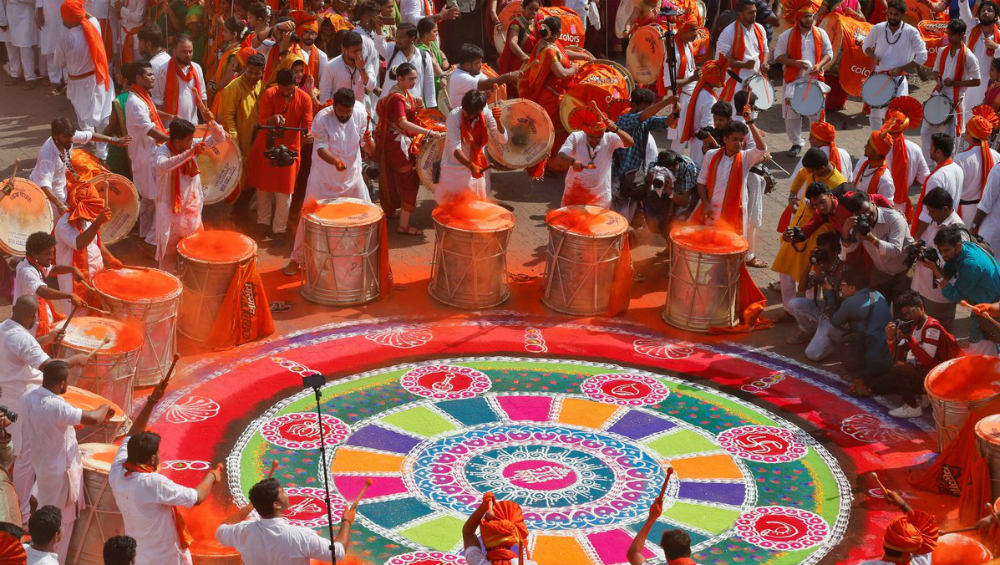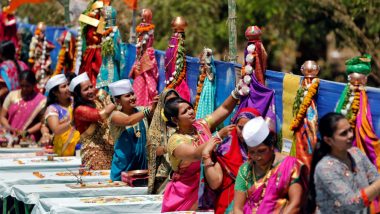India is a land of different festivals. You will hardly come across a month that does not hold a major celebration of togetherness. Individuals are not even done with the vibes of the colourful festival Holi, they are gearing up to yet another special occasion which is right around the weekend. Gudi Padwa is popularly known as the Maharashtrian New Year and is celebrated between March to April every year. The state of Maharashtra is all geared to usher in Gudi Padwa. As per the traditional Marathi calendar commonly known as the luni-solar calendar, Chaitra is the first month and Gudi Padwa is observed on the first day of this month. It is also celebrated as Yugadi or Ugadi in Karnataka and Telangana and also as Navreh by Kashmiri Pandits, Cheti Chand by Sindhis. The festival revolves around the celebration of spring in the agricultural calendar.
Significance and Importance of Gudi Padwa:

Just like other popular festivals, the Maharashtrian New Year is also linked with several mythological genesis. Gudi Padwa, also known as Samvatsar Padvo is celebrated as the first day of the year by Maharashtrians and Konkanis. On this day, new Samvatsara—which is cycle of sixty years, begins. They are known by different names. However, it majorly signifies the arrival of spring and to the reaping of Rabi crops. In rural sectors, farmers make it a point to plough the field on the Gudi Padwa day as they believe it will help in having a good harvest. Gudi Padwa has religious connotations as well. The festival is also linked to the mythical day when Hindu god Brahma created time and universe. While others celebrate the coronation of Rama in Ayodhya after his triumph over the evil Ravana. According to the history of Maharashtra, the great Maratha king, Chhatrapati Shivaji hoisted the victory flag on this day and undertook a march of success. The tradition of raising the Gudi was initiated by Shivaji. Since then, Gudi Padwa has become a festival that is celebrated with much zeal among Marathis. Many people even tie a saffron flag around the Gudi.
What is Gudi?
A Gudi is a stick covered in a bright green or yellow cloth adorned with brocade or zari work that tied to the tip of a bamboo and is decorated with sugar crystals, neem leaves, twig of mango leaves and a garland of red flowers. The tip is again covered by a silver or copper pot in an inverted position.
The festivity is observed by people engaged in cleaning and decorating their house. The day begins early as everyone wears traditional clothes. Families are supposed to begin this day by eating leaves of neem tree or a paste which is prepared with neem leaves, jaggery and tamarind. The Marathi’s food fare on this day consists of delicious Shrikhand (curd-based sweet) and Puran Poli (parathas with sweet fillings). The Konkanis again make Kananga chi Kheer which is a sweet dish made of sweet potato, coconut milk, jaggery and rice.
So, get ready to welcome yet another festival wearing your favourite attire and sugar-coat your day with the mouth-watering traditional sweets. Wish you all a very happy Gudi Padwa. May this year be filled with many reasons to celebrate.
(The above story first appeared on LatestLY on Mar 12, 2018 03:53 PM IST. For more news and updates on politics, world, sports, entertainment and lifestyle, log on to our website latestly.com).













 Quickly
Quickly













 MI
MI







